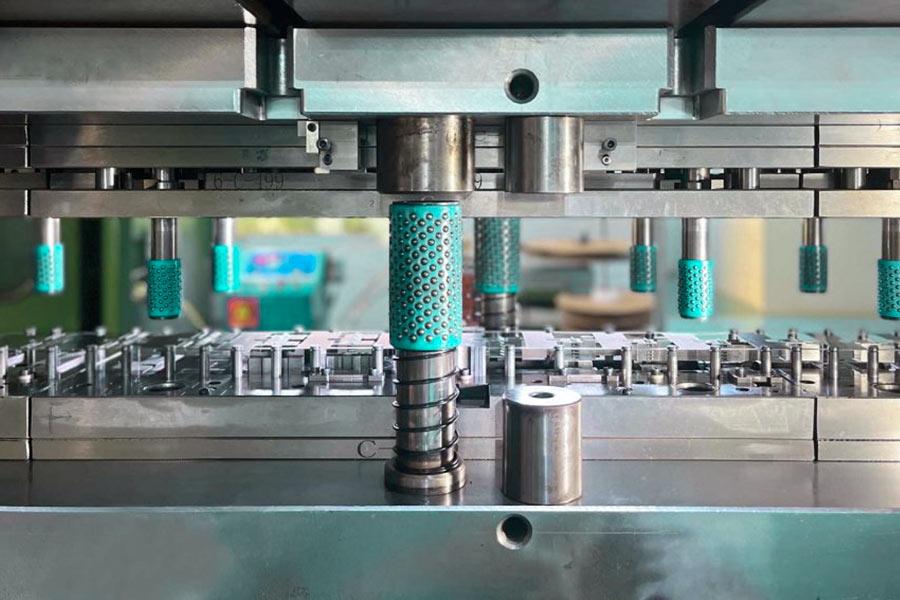Whether it is micro components in precision instruments or large structural components in industrial equipment, the excellent performance ofmetal stampingscannot be achieved without rigorous design and engineering planning in the early stages. From material selection to tolerance control, from mold design to process optimization, every step directly affects the quality and cost of the final product.
JS Precision Manufacturing, with 20 years of industry experience, understands the crucial role of design and engineering stages. Through advanced processing technology and solutions, we are able to achieve ultra precision machining of ±0.005mm, ensuring that every metal stamped component meets strict specification requirements.
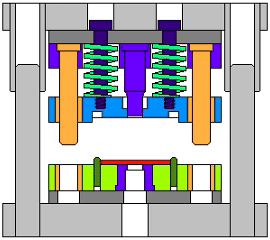
What are the influencing factors of key mold design?
1.Material properties and mold life
The ductility, hardness and abrasion resistance of metal stamping materials directly affect the selection of die and structure design.For example, high-strength steel stamping requires high-chromium alloy steel die abrasion resistance, whilealuminum stampingrequires consideration adhesion issues and optimization of mold surface treatment.
2.Mold clearance and edge accuracy
If the mold clearance is too large, it will cause more burrs, if it is too small, it is easy to cause mold jamming.The geometric precision of metal stamper parts (such as edge straightness and surface roughness) needs to be adjusted according to material thickness and stamping speed to ensure the stability of molding.
3.Process parameter matching
Stamping speed, pressure and stroke parameters need to be optimized in coordination with die design.High-speed stamping requires high rigidity of the die, so it is necessary to achieve complex shape stamping step by step through multipleprogressive dieto avoid springback deformation.
4.Tolerance control and functional requirements
The precision level (±0.01mm) of the metal punch directly affects the tolerance allocation of the die.Functional components (such as electronic connectors) need to be designed to have micron-scale properties, while appearance parts need to take into account both the demolding slope and surface finish.
5.Heat treatment and surface strengthening
Die heat treatment processes,such as nitriding and vacuum quenching, determine the balance between die hardness and toughness.Surface coating (such as TiN coating) can reduce friction and prolong the life of die, especially for high frequency metal stamping.
6.Demolding mechanism design
The demolding slope, thimble ejection position and number of thimbles need to be optimized according to the product shape.It is necessary to increase auxiliary demolding structures the deep cavity parts to prevent the elastic rebound of metal stamping parts from causing mold jamming.
7.Cost and mass production requirements
Mold design needs to consider both initial investment and mass production efficiency.For example, multi-cavity molds can improve efficiency but increase manufacturing costs, while rapidly changing mold structures are suitable for small batch,multi-variety production.
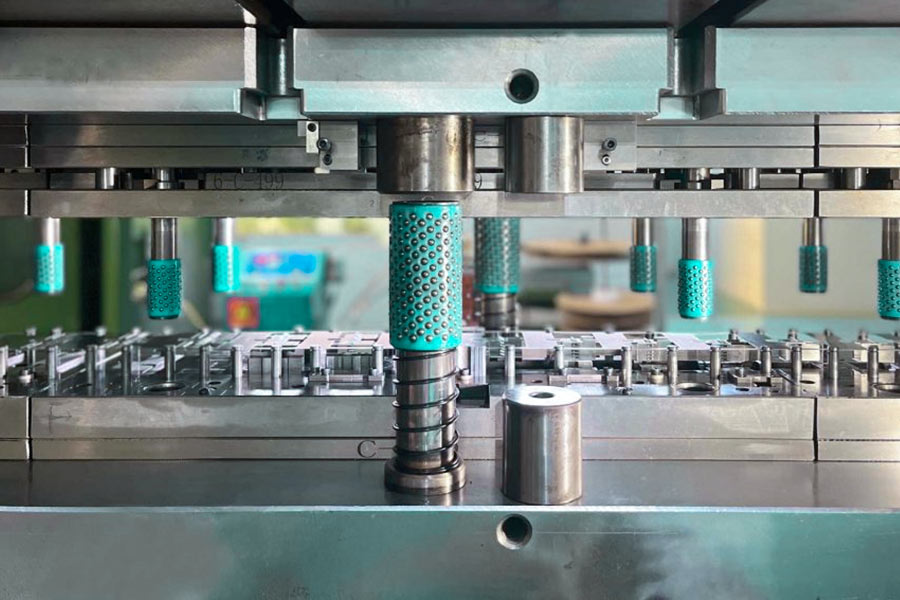
What design elements should be considered in the selection of stamping process?
1.Progressive stamping vs.Deep drawing
Progressive Stamping:
- Advantages: Suitable for metal stamps with complex shape, high precision of multi-station continuous stamping and high material utilization.
- Weaknesses: Need to coordinate multiple processes, high mold cost, suitable for mass production.
- Applicable scenarios: Stamping on metal parts that require multi-functional integration, such as auto parts and electronic connectors.
Deepdrawing:
- Advantages: Deep cavity structures (such as water tank) is formed by a single stretching, simplified process step.
- Weaknesses: High malleability requirements, easy to crease or crack, complex mold design.
- Applicable scenarios: Metal stamping production of containers anddeep cavitiessuch as simple geometric shapes of structural parts.
2.Single vs. Multiple stamping stages
| Process type | Strengths | Weaknesses | Design decision basis |
| Single molding | Reduce the die switching time, improve the work efficiency, suitable for mold with simple shape. | Size accuracy is limited and the rebound problem cannot be solved. | Standard parts (such as screws, gaskets) or mass-produced sheets. |
| Multiple stamping | Step molding can optimize rebound compensation and achieve higher accuracy. | Multiple molds need to be coordinated, resulting in increased costs. | Complex curved parts such as aeronautical structures and precision gears. |
3.Custom mold creation
- Mold design according to special requirements: For products with a special shape or of micro components high precision, we will design the mold according to best efforts. This includes the use of flexible guide devices or multi slider technology to allow precision machining.
- Proper selection of mold materials: Copper alloy mold is used for small precision parts, while high-strength steel mold is used for high frequency stamping on metal.
- Give attention to product quality and production efficiency: Themold surfaceis specially treated in order to reduce the friction. It will improve the surface quality of the metal stamps. Adopt modular design to realize rapid change of molds and promote diversified small-batch production.
What are the engineering design challenges of aluminum alloy stamping?
The following are the main difficulties and countermeasures of aluminum alloy stamping in engineering design, and the metal stamp process characteristics and technical advantages of JS company:
1.Control Material Forming Performance and molding stability
Aluminum alloy alloys (such as 6061 and 5052 models) have excellent tensile deformation ability.However, after stamping, the material will bounce back, resulting in part size deviation.This is especially true when processing parts at greater depth.
We offer the following solutions:
- During the mold design stage, we use high-precisionmachining equipment(precision ±0.005mm).Through computer simulation analysis, it is possible to predict the rebound degree of material in advance, and to compensate the mold surface in reverse.
- For material processing, we provide professional simulation testing services.Through proper heating treatment processes, the hardness of the material can be reduced and the molding property can be improved.
2.Surface protection and oxidation prevention treatment
Aluminum alloy materials possess two major surface quality issues in stamping processing:
- Firstly, its relatively soft matrix properties render it extremely susceptible to scratch defects during the molding process.
- Secondly, the oxide layer on the surface may peel off during plastic deformation, which will adversely affect the adhesion performance of following coating processes.
Counter to these two process difficulties, we have implemented a professional mold surface strengthening program. By adopting the latest surface modification techniques such as diamond-like carbon film coating (DLC) or nitriding treatment, we not only significantly reduced the friction coefficient of themolding processand material adhesion tendency but also enhanced the service life of the mold by more than 30%.
3.Challenges in developing high strengthaluminum alloys
Althoughthehigh-strength 7-series aluminum alloys (e.g. 7075) have excellent strength properties, their low plastic deformation capacitywilleasily lead to cracking defectsinthe forming process, whichisa serious challenge to traditional stampingprocesses.
We have created two novel process solutions:
- Hot forming technology solution: By heating the mold to a working temperature above 450℃, the deformation resistance of the material is significantly reduced. Meanwhile,takinga multi-step progressive forming process, material rebound is effectively suppressed and dimensional accuracy is ensured.
- Flexible Forming Control System: Through a high-performance servo press system, intelligent adjustment of the forming pressure curve can be achieved. Our equipment can achieve astamping frequencyof 1200 times per minute and permits real-time regulation of operating parameters, with an optimum pressure curve for different forming processes.
4.Mold design and cost balancing
Aluminum alloy stamping requires high-precision die (such as micrometer level features), but complex die cost is high, the economic benefits of small-scale production are poor.
Solutions:
- Modular mold design: Our mold replacement technology reduces mold replacement time to 30 minutes, allowing multiple models to be replaced, reducing development costs.
- Simulation drive optimization: JS provides free DFM review reports, saving 20% of mold development cycle.
5.Conflict of structural strength
Auto components need to be safe from collisions while reducing weight (thinning), which makes material utilization extremely high.
Solutions:
- Hydraulic forming technology: The usage of materials is reduced by the realization of complex hollow structures through internal high-pressure bulging.
- Patchwork: We offer laser splicing solutions,weldingsteel plates of different thickness and then stamping to optimize local strength.
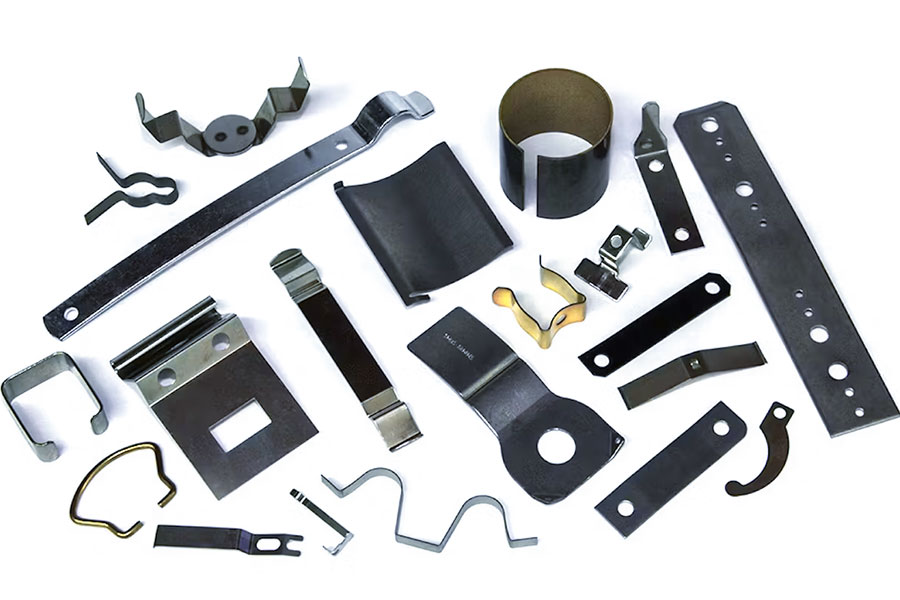
What is the impact of stamping speed on the quality of finished products?
1.The influence of stamping speed on quality
| Speed Range | Strengths | Weaknesses | Typical quality issues |
| Low speed (<100 times/min) | Material flow is stable to reduce rebound risk, suitable for complex shapes. | Low efficiency increases mold wear. | Increased burrs and size fluctuated (±0.05mm or more). |
| Medium speed (100-500 times/minute) | High balance efficiency, good stability, suitable for most metal stampings parts. | high-speed stamping process is prone to Material tearing or surface scratches. | Surface roughness increases and mold life . |
| High-speed (>500 times/min) | Improve production capacity and reduce the risk of oxidation and discoloration. | The ductility of the material decreases and the rebound rate increases (to over 1.5%). | Cracks, folds, accuracy deviation (±0.1mm). |
2.JS company high-tech technology solutions
Smart speed control of stamping:
We use a smart servo press system with an automated ability to change the speed of stamping as per material condition, with adjustable range 100-1200 times/minute. By the example of manufacturing automotive components, the system will automatically execute dynamic pressure compensation automatically when the vehicle is being stamped at high speed of 800 times per minute, practically maintaining the product rebound rate to be 0.3%.
Precision mold technology:
Our mold features an embedded cooling channel structure with special embedded cooling channels, effectively controlling the heat generated by high-speed stamping metal, making themold life30% longer than the industry average. Meanwhile, using diamond-like carbon (DLC) coating technology not only reduces the friction coefficient, but also enables the surface of metal stamping parts to attain micrometer level smoothness.
Material forming simulation technology:
Through finite element analysis (FEA) simulation, we are able to accurately predict material flow conditions at different stamping speeds and thus correspondingly modify process parameters. For example, for aluminum alloy materials, the system would recommend controlling the speed of stamping within 600 times per minute. Our digital platform will provide real-time process adjustment suggestions, which will reduce trial molding cost significantly.
Lntelligent quality inspection system:
With a high-precision blue light scanner, it can online inspect the dimensional accuracy of high-speedstamping parts(± 0.005mm detection accuracy), and automatically reject defective products. With AI visual inspection technology, the system can identify surface scratches, cracks and other defects in real time and increase the rate of product qualification to 99.5%.
3.Suggestions for speed selection in different application scenarios
| Product type | Recommended speed | JS technology adaptation |
| Precision electronic components | 200-400 times/minute | Micro scale mold+low-speed stable stamping. |
| Automotive structural components | 500-800 times/minute | High speed servo press+dynamic rebound compensation. |
|
Deep drawing container
|
100-300 times/minute | Mold lubrication optimization+segmented speed control. |
Whether small batch production requires precision processing or large batch orders requires fast delivery, the dimension accuracy and quality stability of metal stampings can be guaranteed.
How to choose suitable equipment for stamping engineering?
The logical selection of stamping machines is an essential consideration in ensuring production efficiency, cost control, and product quality guarantee. With regard to the requirement for metallic stamp parts in production, the following analysis will be conducted based on the major dimensions:
1.Correlating material properties with equipment tonnage
For light metal materials such as copper and aluminum, low to mid-tonnage punching machines weighing 50-200 tons should be used. This configuration is capable of addressing the needs of molding without causing waste created by material over-deformation.
While dealing with high-strength steel or alloy materials, the heavy-duty stamping machines should weigh more than 800 tons. Sufficient pressure is required to ensure that the material will undergo sufficient plastic deformation during the process of stamping.
For very thin sheets whose thickness is less than 0.2mm, servo presses or hydraulic presses are recommended. Such machinery can provide high speeds so that thestamping processmay be controlled accurately and the tearing risk of material minimized effectively.
2.Productionefficiency in batchesand equipment
| Production patterns | Recommended equipment | Advantages of metallicstamp |
| Small-batch/multi-breed | Hydraulic press, turret presses. | Mold change speed is fast, adapt to flexible layout design. |
| Large-scale/standardized | High-Speed punching machine (1000 +/min). | Increase production capacity and reduce unit costs. |
| Ultra precision/microstructure | CNC punch press (accuracy ±0.005mm). | Realize the characteristics of complex irregular pores and microns. |
3.Accuracyrequirementand equipment performance
- Tolerance sensitive parts: Useclosed-loop control system equipment (e.g. servo presses), real-timestamping error compensation
- High surface quality:Magnetic levitation stampingis prioritizedto reducevibration-inducedburr and distortion.
- Deep stretching process: Multiple intake molds and high rigidity body are required to avoid wrinkling or cracking.
4.Mold design and equipment compatibility
- Mold size limit: Equipment workbench≥ the mold external size +50mm to ensure installation stability.
- Closed-type height adjustment: Hydraulic or servo pressesallowadaptive mold height adjustment, reducing debugging time.
- Automated integration: Automatic feed, test and waste discharge between mold sensors and equipment.
5.Cost-benefit analysis
| Cost dimension | Equipment selection strategy | Metallic stamp revenue |
| Initial investment | Prioritize universal equipment (e.g. mechanical presses). | Shorten the payback period and reduce financial risk. |
| Cost of energy consumption | Choose a frequency converter or servo drive equipment. | Reduce energy consumption by 30%-50% and save on long-term operating costs. |
| Repair costs | Modular design stamping machines (e.g. modular slider). | Reduce maintenance time by 50% to minimize downtime losses. |
JS company uses intelligent control system to manageproduction process.They use precision molds to ensure product quality.At the same time, automated testing equipment will detect product conformity in real time.
This production method can meet different needs.We can guarantee the precise size and stable quality of the metallic stamp, whether for small-scale scale production requiring fine processing or for large scale orders requiring quick delivery.
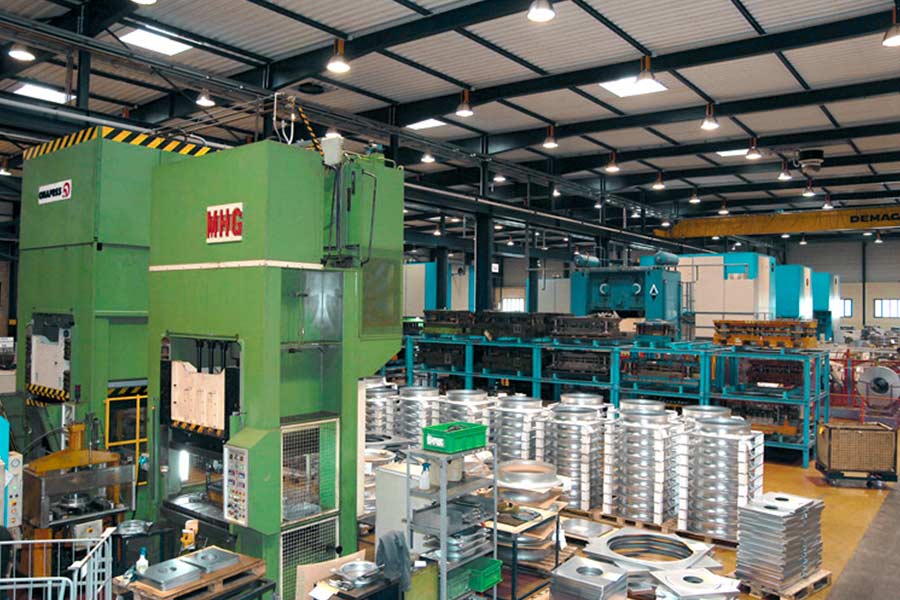
What are the surface treatment methods for metal stamping?
1.Electroplating
- The rust resistance and electrical conductivity of stamp metal surface are improved by electrolysis to deposit metal layer such as zinc or nickel plating on stamping metal surface.
- JS technology association: Cyanide freeelectroplating process, 100% wastewater treatment compliance with EU RoHS standards, while maintaining coating uniformity (±0.01μm).
2.Chemical conversion coating
- Protective film (like phosphating and passivation) isformed bychemicalreactionandgenerallyisused foraluminum stamping partanti-corrosion pretreatment.
- JS Technology Association: Independently developed chromium-free passivation technology, zero VOCemission, and50%improved corrosion resistance of the film layer,and ithas been appliedonbattery trays for new energy vehicles.
3.Anodic oxidation
Oxide film is formed on themetal surfaceof aluminum stamp metal to improve hardness and abrasion resistance, and can be dyed to achieve a personalized appearance.
JS technology association: Provides hard anodizing (film thickness up to 50 μm) combined with sandblasting technology to meet military grade wear resistance (e.g. aerospace fasteners).
4.Spraying and powder coating
polymer coating is sprayed with electrostatic adsorption. It has the characteristics of heat preservation and weatherresistance, and is suitable for decoration parts such as home appliance panel.
JS technology association: Fully automated spraying lines with color difference ΔE≤1.5 were used to support special effects such as matte and high gloss with 99.8% rate.
How much longer is the lifespan of JS molds compared to other suppliers?
1.Core advantage of JS mold lifespan
- High precision machining technology: The precision of die processing reaches ±0.005mm by using the German importfive-axis machiningcenter, which reduces friction loss during stamping process.
- Surface strengthening technology: Innovative application of diamond coating and nitride treatment, so that the mold surface hardness of the mold increased threefold, anti-adhesion wear effect is remarkable.
2.Mould lifespan of JS compared to other suppliers
| Indicators | JS mold | Industry average | Typical customer case |
| Single (10,000 cycles) | 100-150 | 50-80 (universal type) | Metal components of a new energy battery tray. |
| Frequency of maintenance | Quarterly inspection+AI warning. | Maintenance on demand (issue-driven). | The utility model relates to a metal component used for heat sink of certain household appliance. |
| Consolidated costs ($/10,000) | 800-1200 (including maintenance). | 1500-2000 (including frequent replacement). | A metal mass production project for an automobile structure. |
| Typical Failure Modes | No sudden malfunction, gradual wear and tear. | Adhesive mold, broken blade, broken. | Some consumer electronics buckle metal element. |
Value to customers of JS's mold usage time:
Automotive industry: 1.2 million vehicle service life, support a production line for 8 months in a row, reduce mold changes downtime.
Electronics industry: Mass productionstamping metal partswith micrometer level precision and long life in accordance with 0.02mm tolerances.
Cost effectiveness: Based on a customer's annual output of 5 million pieces, we can save over $2 million annually by extending the service life of JS mold life.
Summary
In the process of metal stamping design and engineering practice, material selection,mold designand equipment configuration are the most important contents to ensure the quality of finished products. Material directly affects the durability of product. High precision die design ensures dimension tolerance and surface integrity. Combining with the adaptability of advanced equipment and technology, the production efficiency can be greatly improved and the defect rates can be reduced.
By optimizing these critical processes, engineers can accelerate product iteration while ensuring product quality, putting the product in an advantageous position in a competitive market.
Disclaimer
The contents of this page are for informational purposes only.JS seriesThere are no representations or warranties, express or implied, as to the accuracy, completeness or validity of the information. It should not be inferred that a third-party supplier or manufacturer will provide performance parameters, geometric tolerances, specific design characteristics, material quality and type or workmanship through the Longsheng Network. It's the buyer's responsibilityRequire parts quotationIdentify specific requirements for these sections.Please contact us for more information.
JS Team
JS is an industry-leading companyFocus on custom manufacturing solutions. We have over 20 years of experience with over 5,000 customers, and we focus on high precisionCNC machining,Sheet metal manufacturing,3D printing,Injection molding,Metal stamping,and other one-stop manufacturing services.
Our factory is equipped with over 100 state-of-the-art 5-axis machining centers, ISO 9001:2015 certified. We provide fast, efficient and high-quality manufacturing solutions to customers in more than 150 countries around the world. Whether it is small volume production or large-scale customization, we can meet your needs with the fastest delivery within 24 hours. chooseJS TechnologyThis means selection efficiency, quality and professionalism.
To learn more, visit our website:www.cncprotolabs.com
FAQs
1.What defects canbe caused byexcessive stampingspeed?
Will cause uneven material flow, burr and burr. Mold impact exacerbates wear and tear, easy to crack. Sudden increases in temperature can cause material to harden, increasing the risk of rebound.
2.Howcansurface treatment of molds reduce wear and tear?
DLC coating, nitriding and chrome plating are used to reduce friction coefficient, enhance adhesion and wear resistance, reduce the damage of stamping friction to the die, and significantly prolong its service life.
3.Howtopreventsurface oxidation of stampedparts?
Choose antioxidant material (such as galvanized steel plates), chrome plating or nitride treatment on the surface of the die, spray anti oxidation lubricants during stamping process, control mold temperature, avoid high-temperature oxidation, and timely passivation or oil treatment of the finished product.
4.Howdoesmaterial thickness affect the accuracy of stamped parts?
The design of mold clearance and rebound quantity is directly affected. Excessive thickness leads to impact wear and deformation of the die, while excess thickness leads to tearing or size fluctuation. mold clearance and stamping parameters need to be matched to control accuracy.


